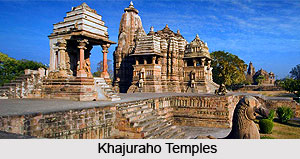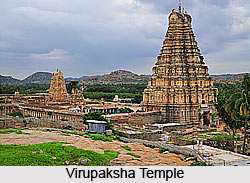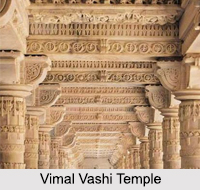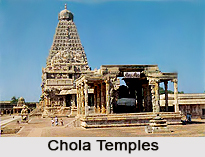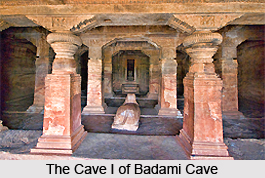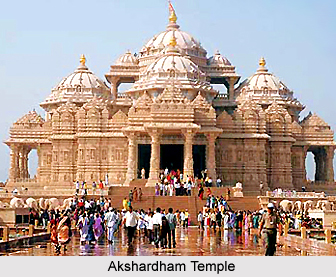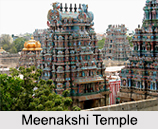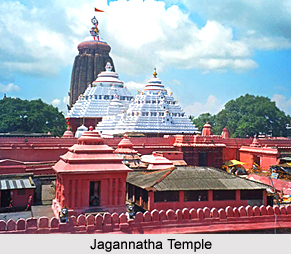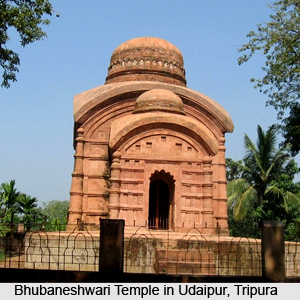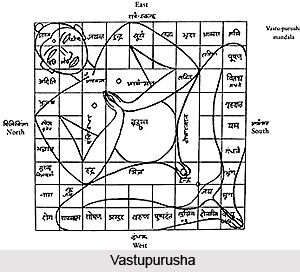 During earlier times, construction of temples was considered to be an extremely pious act, which could bring great religious merit. Therefore, rich people having enough wealth would spend their money in building several temples.
During earlier times, construction of temples was considered to be an extremely pious act, which could bring great religious merit. Therefore, rich people having enough wealth would spend their money in building several temples.
All these steps involved in constructing a Hindu temple are performed either as religious rite or with religious overtones. A proper guide or sthapaka or acharya is first chosen by the `yajamana` (means the sacrificer; here, the financier and builder) for overall guidance and supervision. This particular acharya must be a pious brahmana, with a sinless life. He must be an expert in art, architecture and rituals. The sthapati i, e, the chief architect was then selected by the acharya and he was also given the charge of the whole construction. The sthapati is given an equal status and respect to that of the acharya. The sutragrahin (surveyor), the taksaka (sculptor) and the vardhakin (builder, plasterer and painter) assist him in the construction process. After the day of `sankalpa` (religious resolve), the `yajamana` and the acharya need to take some specific religious vows and lead a very strict life in accordance with those vows.
The next step for constructing a temple is the selection of a suitable site situated in or near a holy place and endowed with natural beauty and peace. Then the site should be cleared of all its vegetation. The place is then purified and evil spirits are disposed of.
The detailed designs and engineering drawings are done earlier. The next work is the `vastuvinyasa`, which includes the drawing of the vastumandala on the site of the temple construction at an appropriate auspicious time. The mandala, which is a geometrical drawing of 64 squares represent the `vastupurusa`. Vastupurusa is the cosmic man embodying the whole creation including the different deities of the Hindu pantheon in the different limbs and parts of his body. After drawing the vastumandala ceremonially, it becomes `alive` with the vastupurusa fixed on it. Later, the image or the symbol of the deity is installed in the centre of this mandala at the appropriate time.
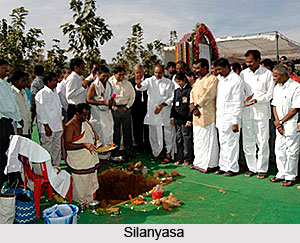 `Ankurarpana` i, e, the rite of the seeds and their germination is another important religious ceremony linked with the various stages of construction of Hindu temple. The main purpose of it is to facilitate the completion of the work without obstructions and obstacles. It is done before starting the construction of the temple even before laying the last brick or stone (murdhestaka) into superstructure and prior to the installation of the main image, before the opening of the eyes (aksimocana) of the image and so on. This particular rite of temple construction includes placing of the seeds of different varieties of rice, sesamum, mustard etc in 16 copper vessels in front of Soma (the lord of germination). They are offered to the concerned deity after germination.
`Ankurarpana` i, e, the rite of the seeds and their germination is another important religious ceremony linked with the various stages of construction of Hindu temple. The main purpose of it is to facilitate the completion of the work without obstructions and obstacles. It is done before starting the construction of the temple even before laying the last brick or stone (murdhestaka) into superstructure and prior to the installation of the main image, before the opening of the eyes (aksimocana) of the image and so on. This particular rite of temple construction includes placing of the seeds of different varieties of rice, sesamum, mustard etc in 16 copper vessels in front of Soma (the lord of germination). They are offered to the concerned deity after germination.
The next step of a temple construction is the `silanyasa` or foundation stone laying ceremony. In this step, the first stone (square in shape) or brick signifying the start of construction is laid. Usually, this brick is laid in the north-western corner of the building plan, drawn on the ground after excavating the foundation to the required depth. The construction of the foundation is started after this. The foundation is built and the ground is filled up to the platform level, except in the middle portion of the garbhagriha which is filled up to three-fourths only.
The adharasila (a base stone) is placed in the centre of this place. Various articles like a pot (called nidhikurhbha), a tortoise and a lotus, all made of stone, a tortoise and a lotus made of silver, a tortoise and a lotus made of gold are placed above this adharasila. From there, a funnel-shaped tube called yoganala, made of copper leads up to the plinth. Then the entire thing is covered by another stone slab called `brahmasila`. One more important step of a temple construction is the `garbhanyasa` (`insemination` of the temple site), which is a very significant rite. Then, on an auspicious night, a treasury or tray of copper, whose dimensions are proportional to the dimensions of the temple, is ceremonially lowered into the ground after filling its 25 squares with various articles and duly worshipping it. The Mother Earth is represented by it and the ceremony itself is done with the intention of achieving the smooth consummation of the temple project.
The necessary materials for construction of temple like the stones, bricks and wood are bought newly from their sources. There are also guidelines for them, like the all the tools and implements used in the construction should be worshipped first. After building the foundation up to the basement level, the superstructure is constructed either with pillars or with walls or a combination of both. The next step of constructing a temple is adding the doors, openings, niches, windows and porches with suitable decorations at the appropriate stages, ending finally with the sikhara (the crest or the finial).
The preparation and installation of the image of the main deity as also the images of the subsidiary deities is the most important part of temple construction.
